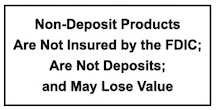Check Fraud
In an increasingly digital world, you might expect check fraud to be a thing of the past. But actually, check fraud remains a prevalent form of financial crime that continues to pose a significant threat to individuals and businesses alike.
Personal and business checks are still widely used as a standard method of payment for both consumers and businesses. They are beneficial to utilize for bills and expenses that you might prefer a paper trail for such as rent, utilities, daycare, taxes, payroll, donations, etc. Unfortunately, check fraud has been on the rise, including a nationwide surge in mail-related check theft in 2023. It is important to know how to protect your accounts from this deceptive practice.
Types of Check Fraud
Check fraud can come in many forms. It’s important to be aware of the various forms of check fraud. Here are some of the most common.
Forgery
In this form of check fraud, a perpetrator alters or falsifies the signature on a check to make it appear legitimate and may also modify the payee’s name, the amount of the check, or the check’s date.
Counterfeit Checks
Criminals produce counterfeit checks by replicating legitimate checks using advanced printing techniques. These counterfeit checks can sometimes deceive both individuals and financial institutions.
Check Kiting
Check kiting involves taking advantage of the time delay between depositing a check and its clearance. Fraudsters open multiple bank accounts and intentionally write checks from one account with insufficient funds, depositing the funds from another account. By exploiting the delay, they can withdraw cash before the financial institution identifies the fraudulent activity.
Check Washing
In check washing, the perpetrator erases or modifies the payee’s name and the amount on a legitimate check using chemicals or solvents. This allows them to reassign the payment to themselves or a designated accomplice.
Check washing schemes are on the rise. In late 2022, the Better Business Bureau issued an alert about an increase in check washing schemes across the country. They issued this video to educate consumers on the growing threat and shared ways that consumers can protect themselves from this popular fraud trend.
Check Fraud Tactics
Criminals are constantly devising new tactics to commit check fraud and at times it may feel like they are always one step ahead. With check fraud on the rise, now is the perfect time to brush up on your knowledge of check fraud tactics to easily identify financial fraud and help educate yourself. Here are the most common tactics that criminals employ to commit check fraud.
HELOC-Related Check Fraud
Fraudsters are using information gained from public record searches on recorded mortgages to create checks drawn on home equity lines of credit. It has been reported there is an uptick in HELOC-related check fraud. To reduce the risk of fraud, check your HELOC statements regularly and examine your credit reports for inaccurate information.
Phishing and Social Engineering
Fraudsters may contact individuals posing as bank representatives, requesting personal information such as account numbers, passwords, and social security numbers. Armed with this information, they can create fraudulent checks or gain unauthorized access to accounts.
Mail Theft
Criminals may steal checks from mailboxes, altering them or using the account information to produce counterfeit checks. In recent years, this form of fraud has been on the rise. In fact, the United States Postal Service (USPS) actually reported almost 300K mail-related fraud or theft complaints from March 2020 to February 2021. Because of this, USPS is now recommending that patrons opt to mail their checks in person from a postal facility rather than leaving checks sitting in their personal mailboxes or depositing them into a blue collection box overnight.
Protecting your Accounts from Check Fraud
Prevention is the key for accountholders to help safeguard your accounts from check fraud. Below are some standard best practices for fraud prevention.
Utilize Secure Mail Delivery
Use secure mailboxes or consider mailing your checks directly through the post office. Whenever possible, use security envelopes that are not transparent and use a trackable delivery method to track your check packages to your local post office or mailbox. You can also sign up for Informed Delivery with USPS so that you’ll know exactly when to expect your checks and other mail to be delivered on a daily basis to avoid checks sitting in your mailbox without your knowledge.
Monitor Bank Accounts
Regularly review your bank statements, account balances, and transactions to detect any unauthorized activity promptly.
Shred Sensitive Documents
Dispose of old checks, bank statements, and financial documents securely by shredding them before discarding.
Be Wary of Phishing Attempts
Never share personal or financial information over the phone or via email unless you have initiated the contact and are certain of the recipient’s identity.
Strengthen Security Measures
Implement strong passwords, enable two-factor authentication, and keep your computer and mobile devices updated with the latest security patches and antivirus software.
Use a Gel Pen
Use a black gel ink pen rather than a ballpoint pen to write a check. This type of pen allows the ink to seep into the paper making it more difficult for scammers to remove the ink for check washing schemes.
Educate Yourself
Stay informed about the latest fraud schemes and techniques employed by criminals to better protect yourself and your finances.
Order From a Reputable Source
There are plenty of options in the marketplace for ordering checks, but the truth is that not all vendors are created equal. Ordering directly from your bank is a great first choice to ensure that your checks contain stringent security features and that they are ordered from a reputable check printing vendor that meets industry compliance standards.
Encourage High Security Checks
While most reputable check vendors have stringent security features automatically included on every check, high security checks are also a great option for consumers who are more wary of check fraud or have been a victim of fraud in the past.






